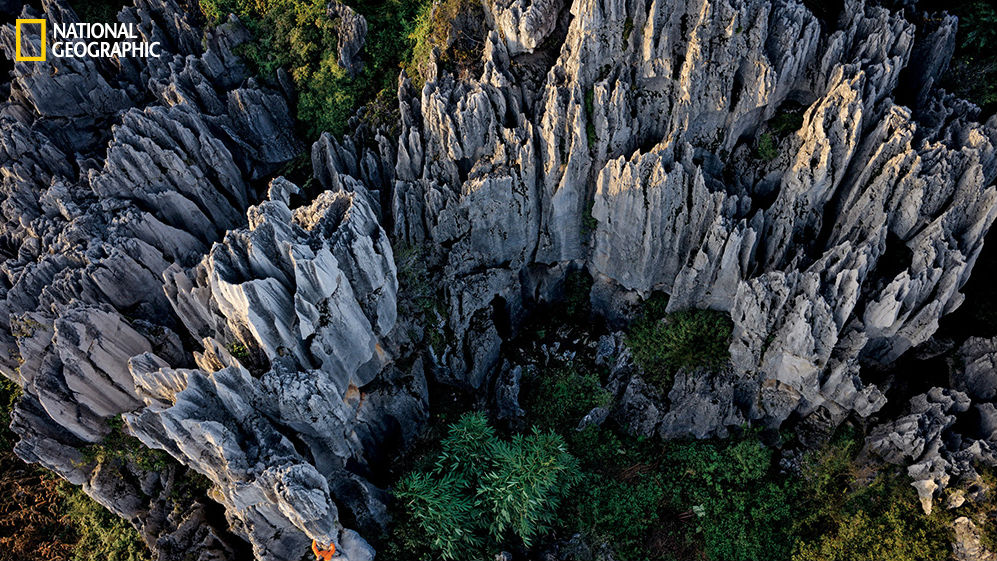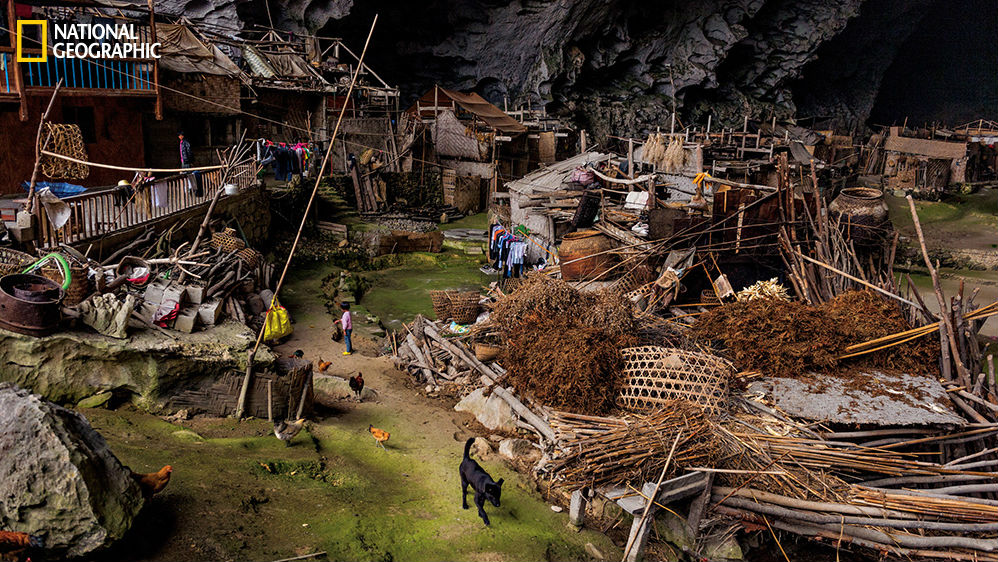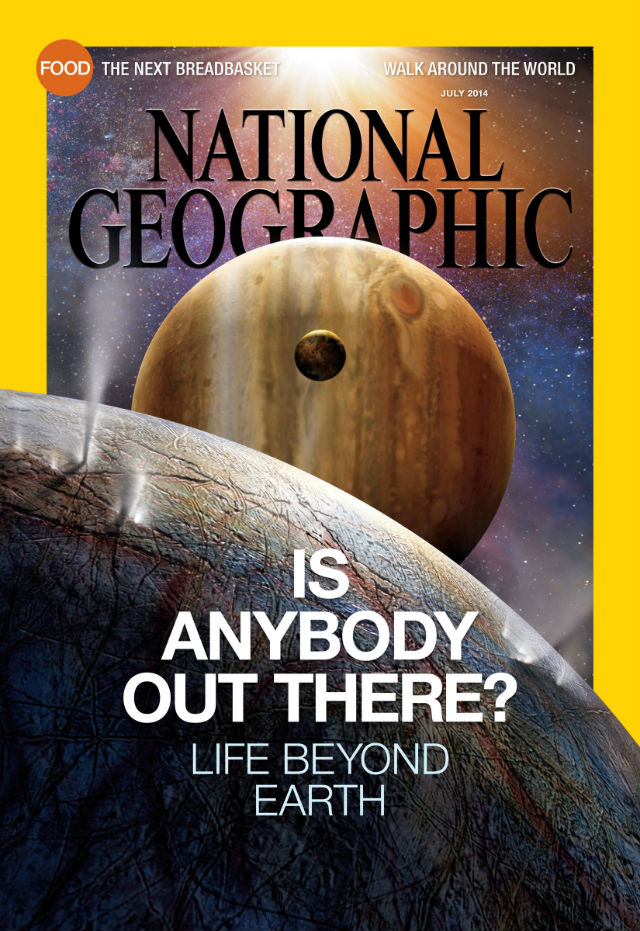Our species owes a lot to caves. The natural rock formations have been homes, religious sites, art galleries, and graveyards for humanity’s earliest ancestors. The July issue of National Geographic magazine delves into some of the planet’s most expansive cave systems, located in the wilds of China.
Below follows an excerpt from the story, but check out the magazine’s awesome interactive here too.

Image: Climber Emily Harrington takes the hard way up southern China’s Moon Hill, an arch from the remains of a collapsed cave. Sightseers have an easier option: a paved walkway to a viewpoint beneath the arch, then a dirt path to the top. © Carsten Peter/National Geographic
Crouched on the floor in the mud in one of the biggest cave chambers in China, one of the biggest in the world, we can hear nothing but our breathing and the drip, drip of distant water. We can see nothing but a void. Then we turn to the screen of a laptop connected to a laser scanner, and the Hong Meigui Chamber reveals itself. We float up to its roof, which forms a cathedral arch 290 metres above the cracked mud where we are crouched to avoid the scanner’s beam. We hover over a lake. We touch down on a beach on the far side.
“It’s like Google Earth,” I say.
“It’s like The Matrix,” says Daniela Pani, the Sardinian geoscientist operating the laptop.

Image: The photographer’s lights illuminate the green-hued Getu He river in the Miao Room — considered the world’s second largest cave chamber by area. © Carsten Peter/National Geographic
The digital version of the cave is more real than real life. Real caves are dark. Extremely dark. In a big chamber, even with modern LED headlamps many times brighter than the old carbide ones, you can see 45 metres ahead or above, and not much more. Mist or emptiness overwhelms even the brightest beam. It’s natural to want to see more.

Image: The Stone Forest is a labyrinthine world of eroded and dissolved limestone near the southern Chinese city of Kunming. Early visitors gave the formations names like “rhinoceros admiring the moon” and “stone singing praises of plums.” © Carsten Peter/National Geographic
Wanting to see more is what drew Andy Eavis to southern China more than 30 years ago. Here in the still cloistered country was the planet’s greatest concentration of the otherworldly topography known as karst: sinkholes, stone towers, forested spires, and disappearing rivers that form over centuries as rainwater dissolves a soluble bedrock, usually limestone. And hidden inside and underneath this green mountainscape — the same iconic scenery found in traditional Chinese paintings — was the planet’s greatest concentration of undocumented caves.

Image: Uphill from the giant Miao Room, 21 families from the Miao minority live under the roof of a cave. They first came, elders say, because of the reliable spring. The cave now contains a basketball court and, until recently, had a school. © Carsten Peter/National Geographic

Check out the rest of the story in National Geographic‘s July 2014 issue.
Top image: Members of a British-led expedition pause at a subterranean lake on the way to Titan Chamber in southern Guizhou Province, where it rains more than 50 inches a year. The lake appears and disappears as the rains come and go. © Carsten Peter/National Geographic
